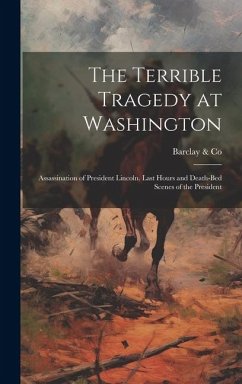
When the Terrible Ifs Accumulate
Versandkostenfrei!
Versandfertig in über 4 Wochen
28,99 €
inkl. MwSt.
Weitere Ausgaben:

PAYBACK Punkte
14 °P sammeln!
The ability to recognize a failing strategy is at least as important as the ability to compose a successful one. But despite its importance, this skill is underappreciated and difficult to develop. The existing literature on military failure obscures the true nature of defeat by focusing primarily on moral and physical deficiencies, or on personal and professional incompetence. The truth is that failure oftengradually emerges from the consequences of countless small actions and decisions; in Winston Churchill's phrase, "The terrible Ifs accumulate." Thus, identifying the "terrible Ifs" may pro...
The ability to recognize a failing strategy is at least as important as the ability to compose a successful one. But despite its importance, this skill is underappreciated and difficult to develop. The existing literature on military failure obscures the true nature of defeat by focusing primarily on moral and physical deficiencies, or on personal and professional incompetence. The truth is that failure oftengradually emerges from the consequences of countless small actions and decisions; in Winston Churchill's phrase, "The terrible Ifs accumulate." Thus, identifying the "terrible Ifs" may provide commanders with warning signs that portend potential failure. Disaster theory describes a concept similar to the "terrible Ifs," an incubation period, during which events increasingly diverge from expectations. This paper examines three historical examples: theSicilian Expedition from the Athenian perspective, the Battle of Stalingrad from the German perspective, and the Battle of Dienbienphu from the French perspective. The present analysis identifies and describes the characteristics of the incubation period in each of the three examples just mentioned. This work has been selected by scholars as being culturally important, and is part of the knowledge base of civilization as we know it. This work was reproduced from the original artifact, and remains as true to the original work as possible. Therefore, you will see the original copyright references, library stamps (as most of these works have been housed in our most important libraries around the world), and other notations in the work. This work is in the public domain in the United States of America, and possibly other nations. Within the United States, you may freely copy and distribute this work, as no entity (individual or corporate) has a copyright on the body of the work. As a reproduction of a historical artifact, this work may contain missing or blurred pages, poor pictures, errant marks, etc. Scholars believe, and we concur, that this work is important enough to be preserved, reproduced, and made generally available to the public. We appreciate your support of the preservation process, and thank you for being an important part of keeping this knowledge alive and relevant.












